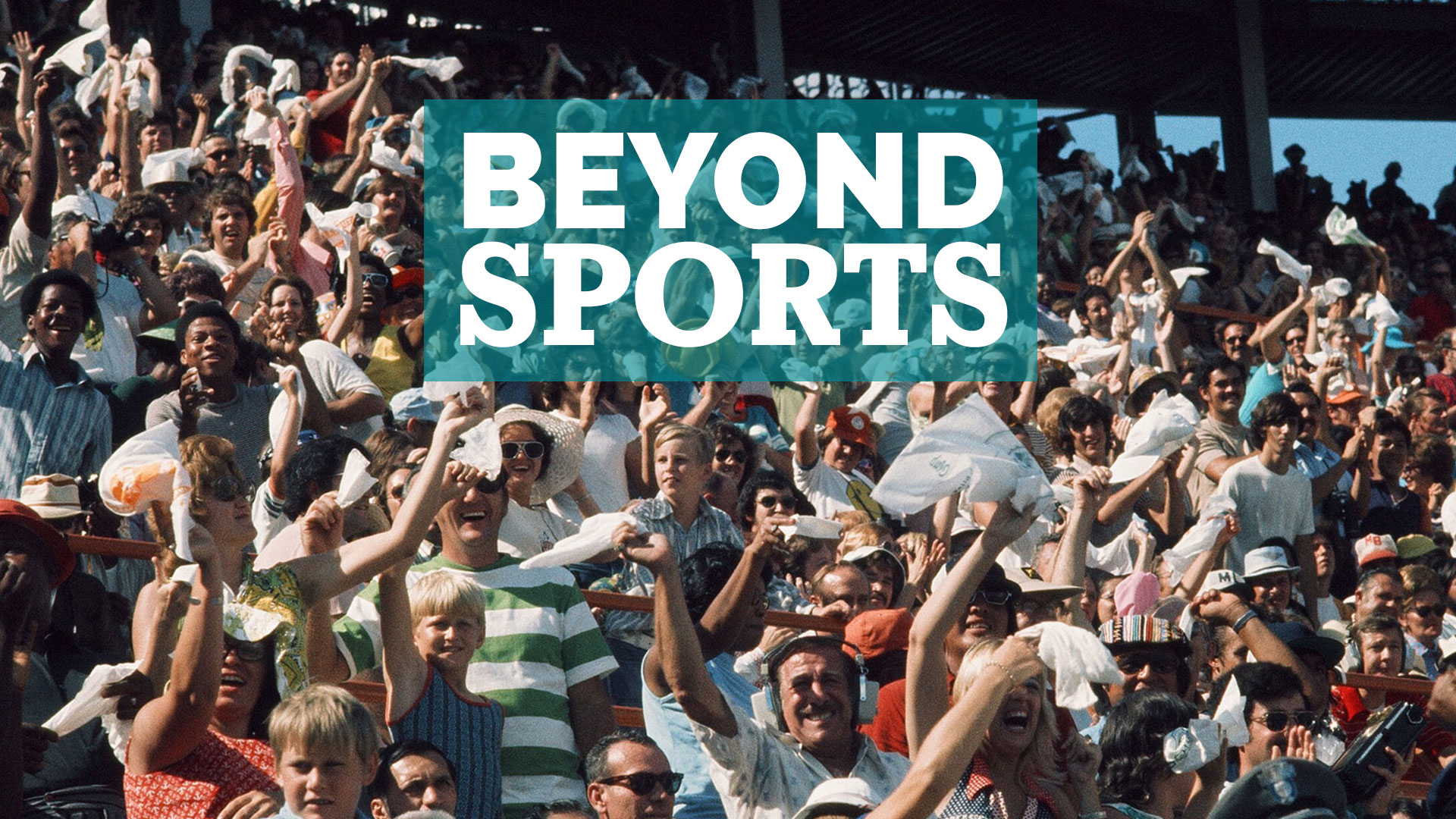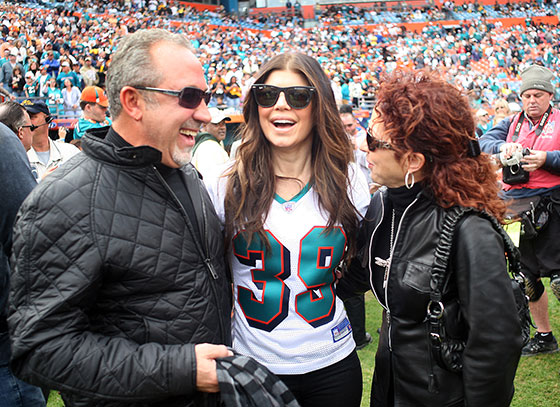
Loading...

Loading...





Dolfans celebrate by waving white handkerchiefs at the request of play-by-play announcer Rick Weaver. Miami Herald file
From food to film, members of the Miami Dolphins have put South Florida on a national stage.

People whose names are highlighted, like Dan Marino, hold a Dolphins team record or have received an honor. Click their names for details. See our full Hall of Records list here.
P icking which restaurants will succeed parallels drafting: some no-brainers, a lot of who-knows? We’re not letting Jeff Ireland make this selection, either. As an example, imagine picking the beasts and busts from this foursome back in, say, 1989:
A steak house started by an NFL coach whose prior known relationship with meat was a meat-and-potatoes offense in the 1970s.
A sports bar started by a career second-stringer
A bagel place started by a linebacker from Wisconsin
Any restaurant started by the most iconic athlete in South Florida history, who also happens to be of Italian descent.
Admit it, when you heard Dolphins coach Don Shula would be going into the restaurant business, you thought something along the lines of, “Oh, no. This could be so sad with, like, Shulaburgers, T-formation-bone steaks and Stanfill Sack doggie bags.”

C.W. Griffin/Miami Herald file
Don and Dave Shula at their Steak House in Miami Lakes. One of their goals is to expand the business. The theme of the Steak House is the perfect season of the 1972 Dolphins.
And some of you, especially former New Yorkers, thought, “A bagel is just that — a bagel! White bread. Maybe sesame seed or poppy seeds. None of these fruity, funky combination deals. John Offerdahl has hit too many guys head first.”
Yet, RIP Koz’s, Mike Kozlowski’s super sports bar in Fort Lauderdale. RIP various forms of Dan Marino’s.
Wait, Offerdahl’s Café Grill? Oh, that’s right, Offerdahl’s Bagels grew to 10 stores before getting bought by the folks that own Boston Market. Now, he has a new chain of restaurants across South Florida.
Shula’s Steak House, meanwhile, continues on in its prime (rib) as consistently successful as the coach during his 33 years of head coaching with only three losing seasons. Now, magazine covers featuring Larry Csonka, Dolphins game balls from milestone wins, faded Dolphins programs with funky graphics sit in 14 Shula’s Steakhouses in nine states around the country. There’s four types of offshoots — Shula’s Bar & Grill, Shula’s 347, Shula’s 2 and, yes, Shula Burger — spread across Florida and six other states.
Teenagers around the country probably pass the memorabilia cases and murmur, “Oh, so this Shula was an NFL coach, huh? I hear the Madden guy was too…”
Say “$10, no blocking!” to a middle-aged Dolphins fan and watch the face melt into wistfulness for a second. That’s the person who’ll see similar signs waved fruitlessly from the lawns near Marlins Park today and slow with a sigh.

Charles Trainor Jr./Miami Herald file
Doli Espinoza carries a sign offering parking in her yard for a Miami Marlins game. Many residents charge fans a reduced rate to park in their yards, a tradition that dates back to the old Orange Bowl days.
See, parking garages surround Marlins Park’s south and north sides. Homes and yards surrounded the Orange Bowl. And residents with an entrepreneurial spirit took advantage of the situation by offering parking on their property.
Dolphins games always drew many times more cars than the Orange Bowl’s meager parking areas could handle. This meant extra income, maybe 20 to 40 percent of the mortgage or rent, for residents who didn’t mind tire tracks on the lawn or spending Sunday afternoon living behind that used car lot look.
In Miami, the real turns surreal quicker than a Marino two-minute drill.
Veteran NFL kicker Tony Franklin, signed weeks before, blew a chip shot field goal attempt in the fourth quarter of the Nov. 20, 1988, 6-3 home loss to New England. The loss all but made certain that for the first time in the Shula Era, the Dolphins would miss the playoffs for a third straight year.
Franklin hid from the media in the training room, then skedaddled out a back door with Miami Vice’s Michael Talbot blocking cameras and reporters. That’s right, running interference for Franklin wasn’t an actual police officer, but an actor who plays a cop on television (and was wearing the Hawaiian shirts favored by his character).
Of course, a few years earlier, when Vice was at its height, series star Don Johnson was introduced to Don Shula at a practice. Most versions of this story say Shula, upon hearing that this was Don Johnson of Miami Vice, told Johnson he appreciated the job Johnson and the police force did.

Handout
Actor Jimmy Smits did the coin toss at a 2007 preseason home game with what appeared to be his family, but really it was his TV family from the upcoming 2007 series Cane. The coin toss was used in an episode.
At least Shula thought he knew what was going on while fans at a 2007 Dolphins preseason home game against Jacksonville probably left still arguing over what they saw. Someone who looked like actor Jimmy Smits, former star of LA Law and NYPD Blue, did the coin toss with what appeared to be his wife and son. It was Smits and it was his family – his TV family. The actors appeared as their characters of the upcoming CBS show Cane, which would use the coin toss in an episode. Surely adding to any confusion and arguments months later: Cane got cut after 13 episodes.
Now, MC Hammer ripping off Rick James’ “Super Freak” for his 1990 hit “Can’t Touch This” brings a shake of the hips and shoulders out of nostalgia for the period. Maybe a wistful smile, too. Ah, the days when the Dolphins thrilled and South Beach epitomized hip while being affordable.
Watching Cory and The Fins rip off MC Hammer for “Can’t Touch Us” reminds us sometimes nostalgia means having to say you’re sorry…once you stop laughing and clear the tears, that is. The video assaults the eyes with high top fades, those early 1990s striped genie pants and offensive linemen Richmond Webb and Keith Sims throwing arms and bellies around in what appears to be a then-popular form of dancing.
The Cory and The Fins video opens with the end of the Miami Dolphins Fight Song. Don’t try to ask, “Which one?” You know which one. The 1970s Super Bowl-era song stolen by the Houston Oilers in 1978 and still favored over all other attempts to mutate it for modern tastes (we don’t allow felons to vote, but give a ballot to people who play the T-Pain version?). Never mind the corny lyrics (“We take the ball from goal-to-goal like no one’s ever seen…”) that sound so dated during the Dolphins many recent years of offensive constipation. Or “when you say Miami, you’re talking Super Bowl” when anyone who actually remembers the Dolphins last Super Bowl appearance is old enough to apply for early midlife crisis.
Or, the banjo. A banjo? You can’t play a banjo in this town without somebody putting a cup down next to you and throwing change into it.
If it sounds a little country, well, Lee Ofman lived in Louisiana when he scribbled out the lyrics. The song got popular during the 1972 Perfect Season and generations grew up singing it. During a 2008 conference call with South Florida media, Kansas City wide receiver and Norland High graduate Dwayne Bowe answered “Did you grow up a Dolphins fan?” by singing the fight song chorus.
Ofman, now an attorney in Tennessee, reportedly never received royalties but holds no hard feelings for the franchise he still loves. But, yes, he did the Houston Oilers version for them.

File
On the left, Larry Csonka, standing, with Jim Kiick on their book cover after being dubbed Butch Cassidy and The Sundance Kid. On the right is the cover of the 1972 Sports Illustrated where Csonka displayed his middle finger.
Remember when the Dolphins ascended to cool? No, not the early to mid-1970s when the Dolphins ascended to great and everyone was cool. Look at Larry Csonka – mighty alpha male rumbling through the Steel Curtain, pounding the fearsome Raiders, crushing the Purple People Eaters…but whose tongue seemed to rarely leave his cheek. He posed in 1800s period costume with fellow running back Jim Kiick after a Miami News writer dubbed them Butch Cassidy and The Sundance Kid. The resulting picture became the cover of their co-written book Always on the Run. That’s not to be confused with the cover shot for the Aug. 7, 1972 Sports Illustrated issue with Kiick standing, Csonka sitting and laying a middle finger gesture over his leg.
Months later, before Super Bowl 8, the Dolphins found Shula uptight even by the standards of a man who didn’t understand the term “little mistake.” Csonka led the group that put an alligator, brought by Manny Fernandez, in Shula’s shower stall. Shula could’ve used Ace Ventura if Csonka hadn’t confessed the next day in a team meeting. Csonka also confessed Shula won by one vote — on whether to tape the alligator’s mouth shut.
Fernandez’s moustache. Curtis Johnson’s Afro. Mercury Morris’ name. Some players being mad that the team paid for wives to accompany players to Super Bowl 7, but not their girlfriends. Except for Jake Scott — he wanted to bring his mother.
Cool champions.
Dolphins play-by-play man Rick Weaver asked fans to wave white handkerchiefs whenever the Dolphins scored a touchdown during the 1972 home game against Baltimore. Soon, Orange Bowl crowds looked like 70,000 damsels in distress as the white hankies fluttered in celebration of Dolphins success.

Miami Herald File
Fans wave white handkerchiefs in celebration at the request of play-by-play announcer Rick Weaver.
The tradition developed a dark doppelganger as Oakland fans waved black towels during the classic 1974 AFC Divisional Round game, a 28-26 Dolphins loss to the Raiders on a “Sea of Hands” touchdown. Pittsburgh broadcaster Myron Cope came up with The Terrible Towel in 1975. As the Steelers reeled off four Super Bowls in six seasons, South Florida put the white hankies in the closet corner with tape players (8-track and reel-to-reel) and platform heels.
The Dolphins tried to force being cool in 2009 and 2010. Owner Stephen Ross attempted to inject South Florida diversity and celebrity sizzle into the Dolphins image.
Out came the Orange Carpet for home games, which actually made sense for night home games and helped with electric atmospheres early in the 2009 season. Out came a stadium version of South Beach middle-of-the-night spot Club Liv. Apparently, not enough decision makers realized that if you’re really part of the glitterati that makes places like Club Liv what they are, you play your game Saturday night and in Sunday’s wee hours. Sunday afternoon isn’t for dealing with pregame traffic to enjoy more Club Liv. It’s for postgame shuffling past the dog to Club Couch.

Charles Trainor Jr./Miami Herald File
Tennis stars Serena and Venus Williams hold Miami Dolphin jerseys that team owner Stephan Ross gave them after announcing their limited ownership.
Ross brought in South Florida celebrity “minority owners” such as Gloria and Emilio Estefan, tennis’ Williams sisters (Palm Beach Gardens residents) and JLo’s then-husband Marc Anthony. Venus and Serena Williams got introduced at a post-practice press conference, delighting the players who hung around to watch then volley some game at the sisters. The press conference announcing the Estefans might have been the largest non-Super Bowl media session at Always Joe Robbie Stadium To Me. They adroitly handled some sometimes silly questions with impeccable grace that the Dolphins wish Chad Henne possessed in late-game situations. But, the Estefans have been so prominent for so long and with such class, they’re less celebrities to us than the neighborhood’s matriarch and patriarch who live in the big house down the block.

C.M. Guerrero/Miami Herald File
Emilio Estefan, Fergie and Gloria Estefan have a laugh on the field before a game in 2010 at Miami.
Two pieces of pop culture from 1994 and 1995 made the Dolphins hip enough to be directed by Quentin Tarrantino.
No Dolphins were harmed in the filming of Ace Ventura: Pet Detective, although the plot involved a dolphin kidnapping (no, not Alfred Oglesby). Jim Carrey starred. Dan Marino’s in the movie so much, he’s listed fifth in the movie’s credits on imdb.com site. Also, seven Dolphins players and Don Shula (the same guy who inspired the alligator prank?) made appearances. Marino’s Isotoner glove commercials counted as common enough cultural knowledge to be an integral part in the movie.
Ace Ventura, released in early 1994, places the Super Bowl in Miami, which it was in January 1995. Darius Rucker, Hootie of Hootie and the Blowfish, would rather the Super Bowl include the Dolphins instead of just occasionally visit the Dolphins’ home stadium. Rucker expressed the frustration of many Dolphins fans with the line “the Dolphins make me cry” in the group’s Billboard top 10 hit “I Only Want to Be With You” (and, to think, he hadn’t seen A.J. Feeley yet!)
Come time for the video, Rucker and the group designed one that allowed them to play with their athletic idols. Rucker tosses a ball around with Marino, dropping a perfect pass after the aforementioned line. The last image in the video is Marino, face filling the screen, grabbing his head after another dropped pass.
No, they didn’t get that image from Marino’s reaction to Pete Stoyanovich slicing the 48-yard field-goal attempt with eight seconds left in the Dolphins’ 22-21 1994 playoff loss to San Diego six months before the single’s release.
Produced by Kara Dapena
Comments
What's your favorite bit of Miami Dolphins pop culture?